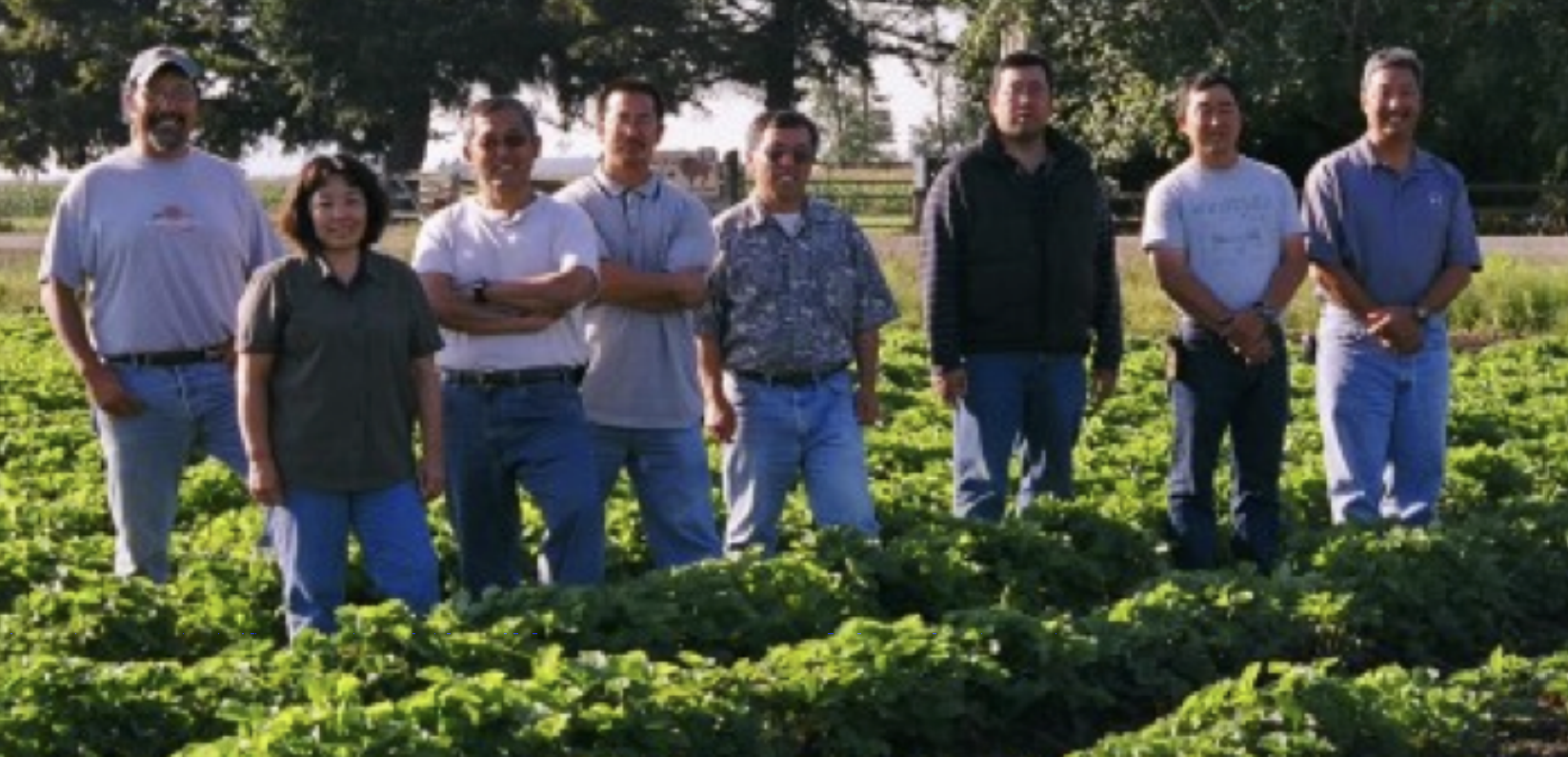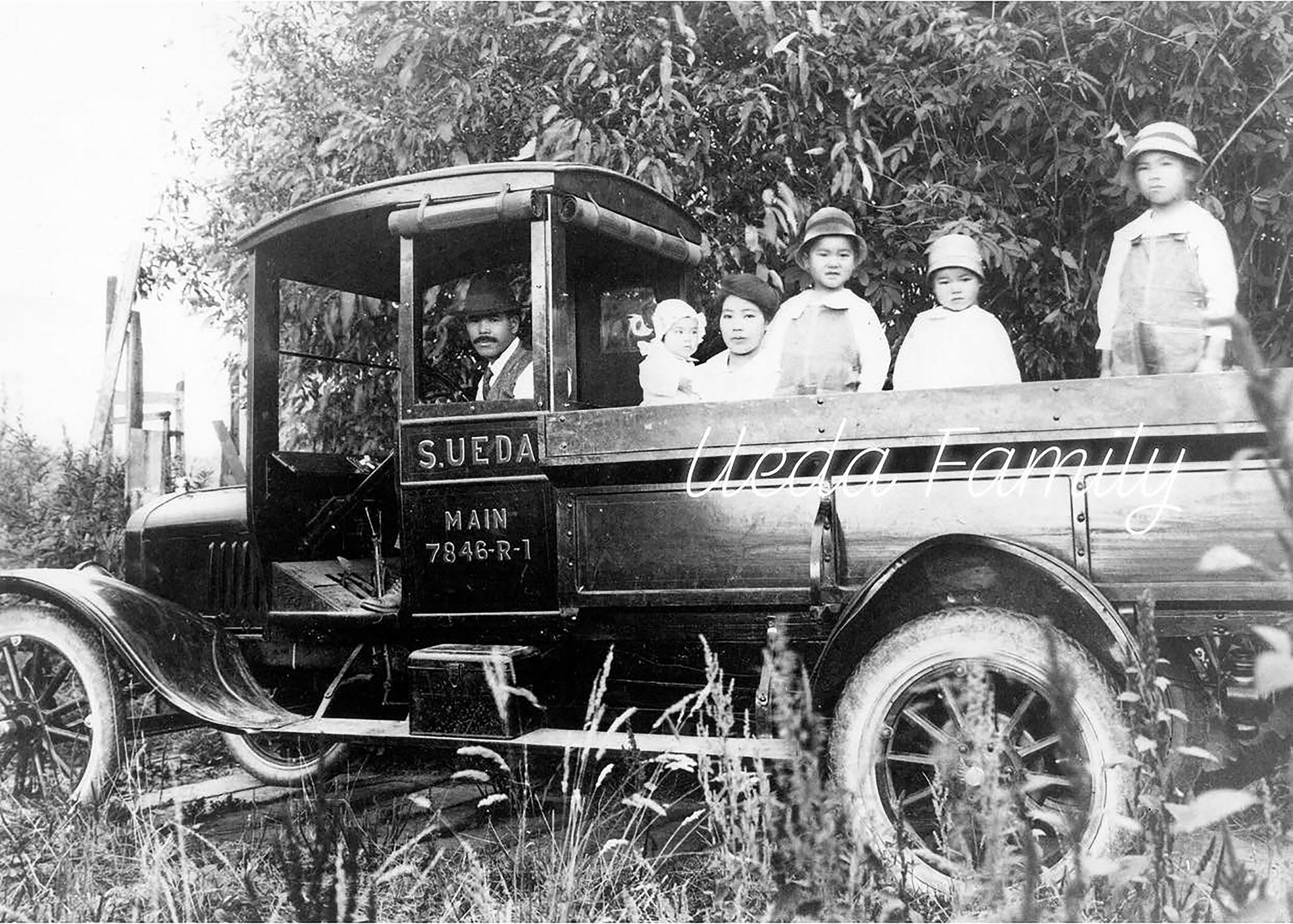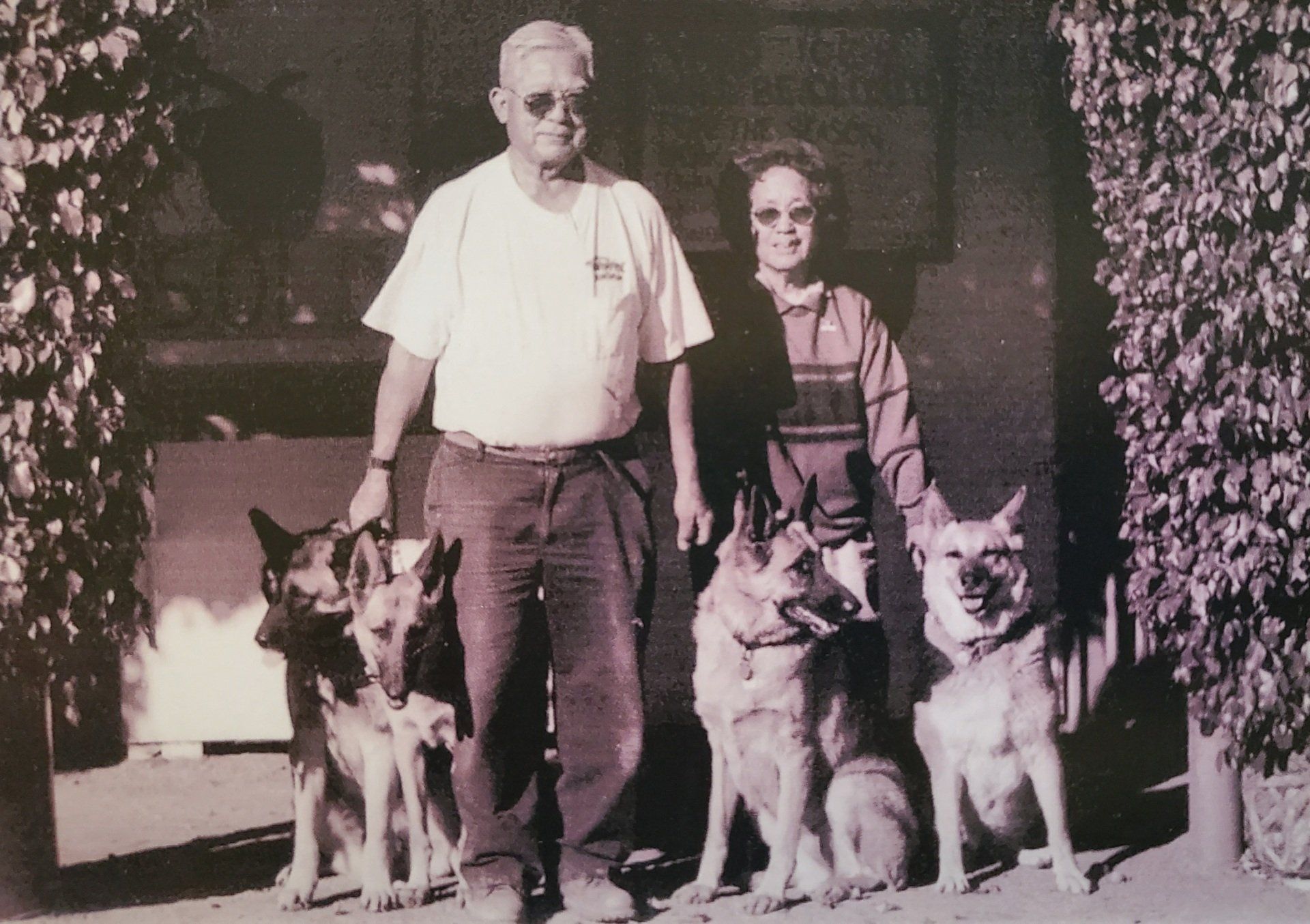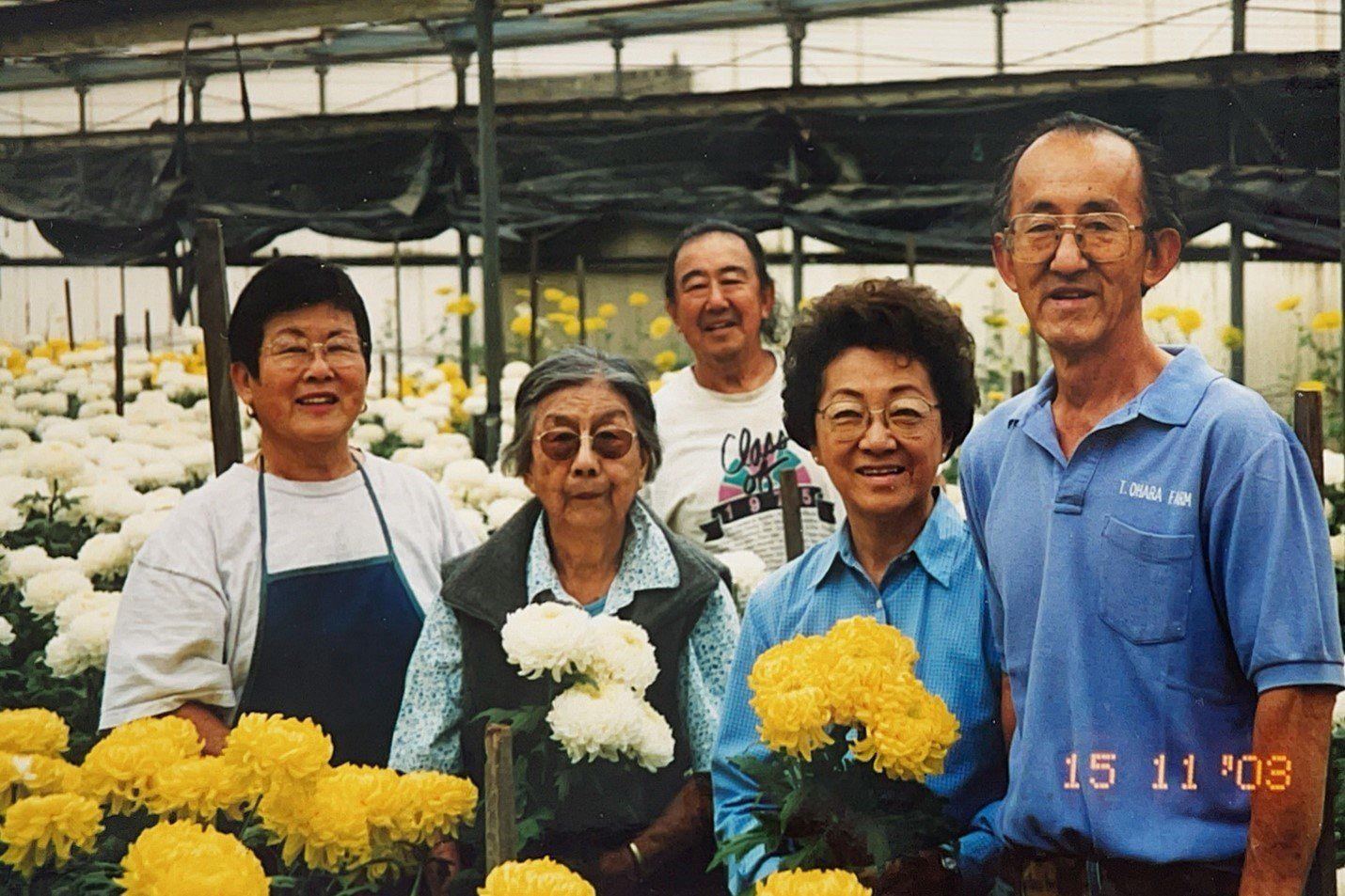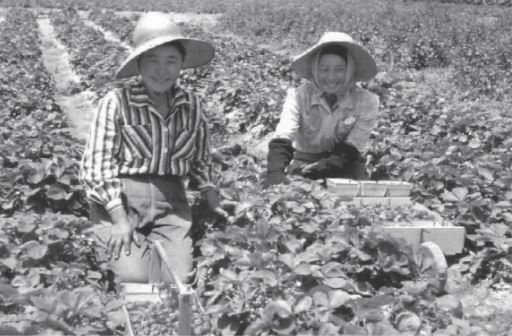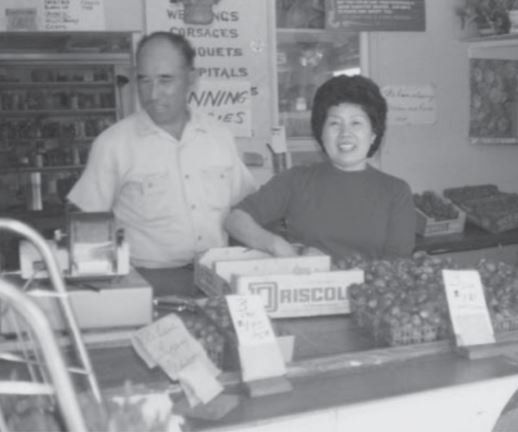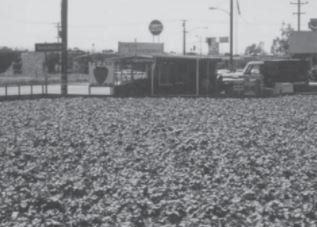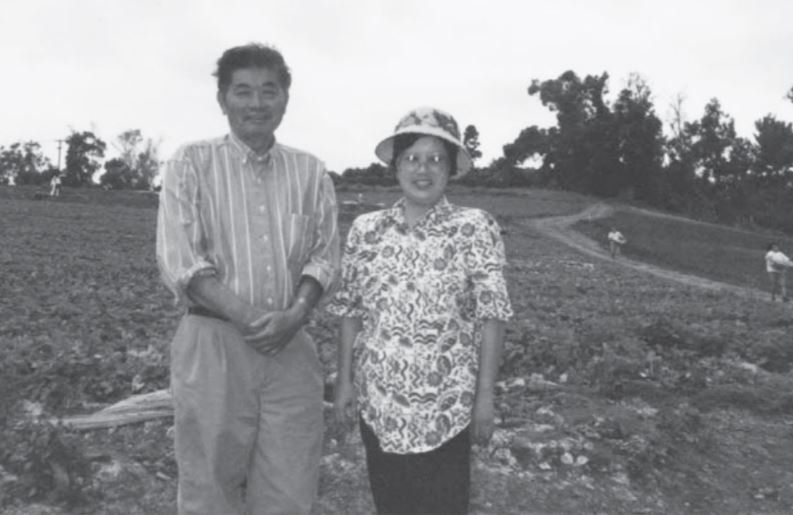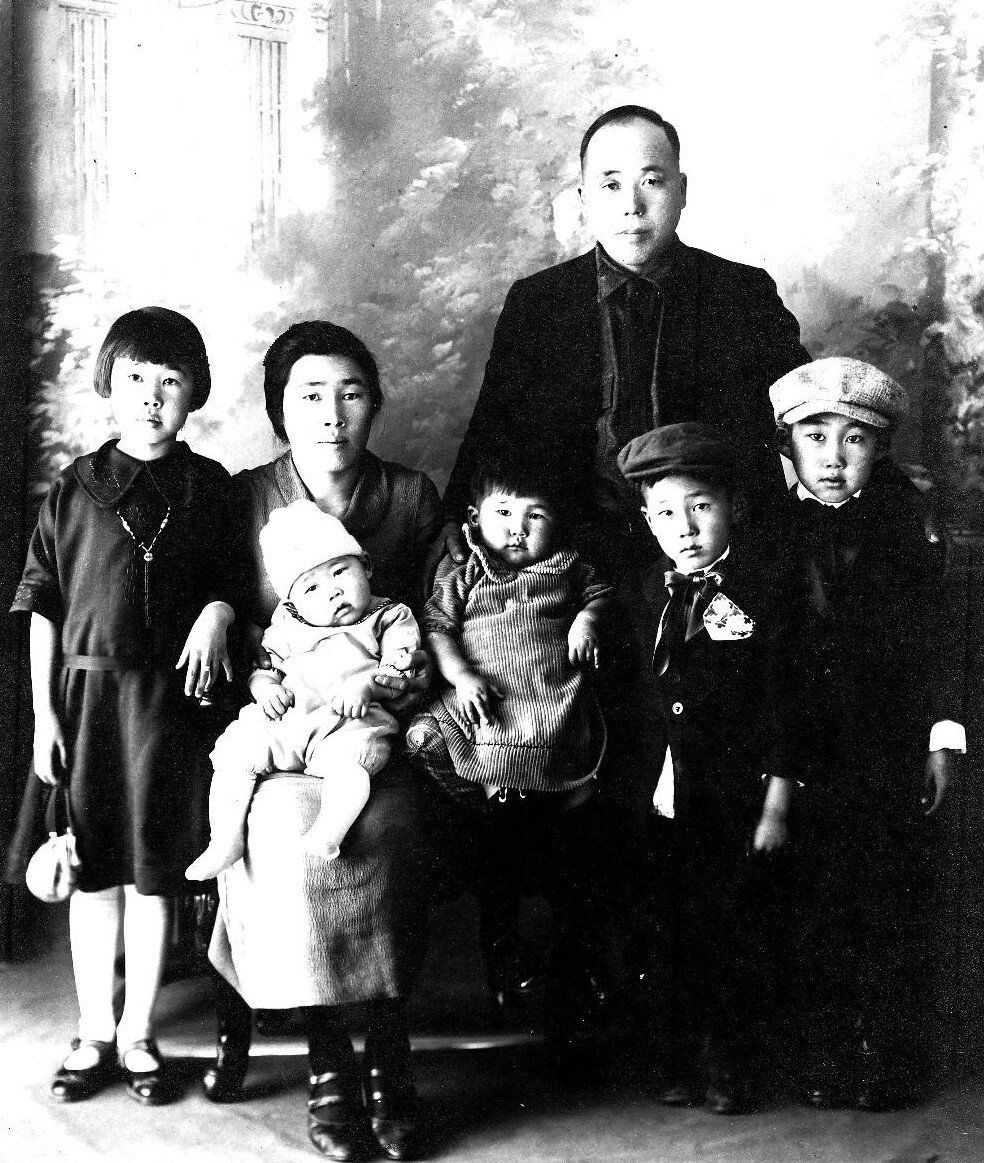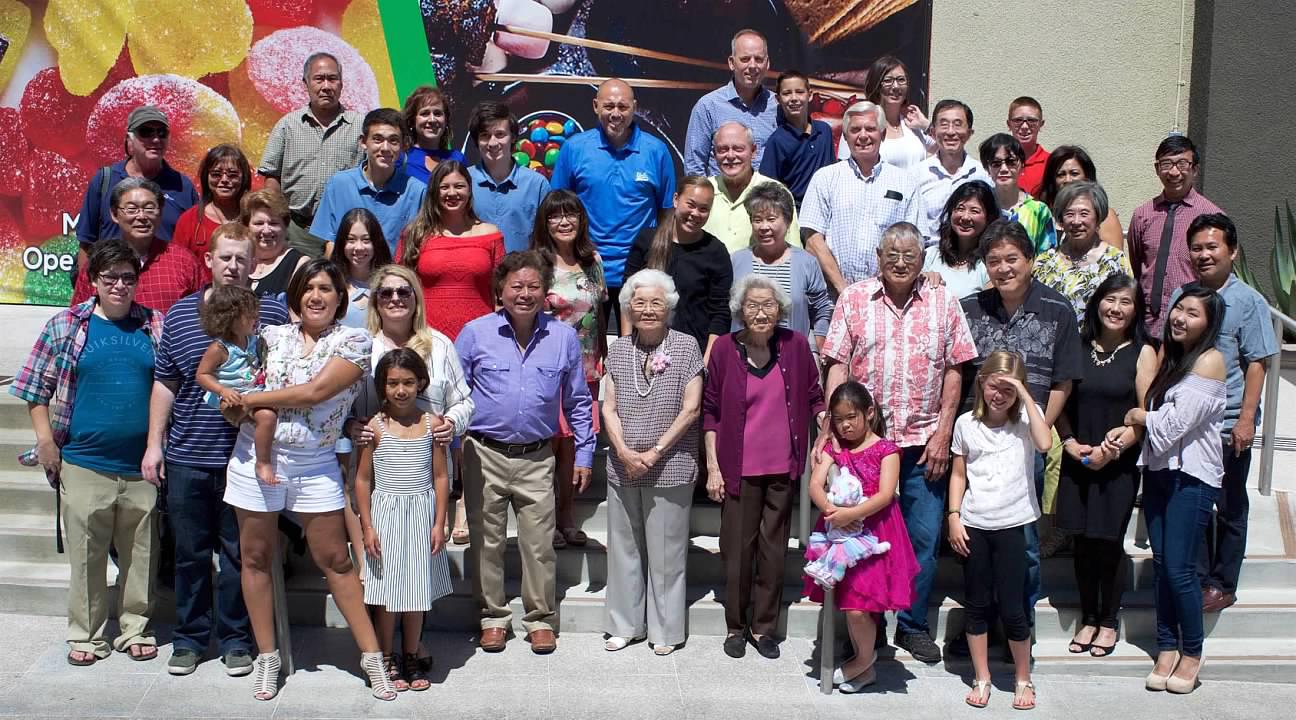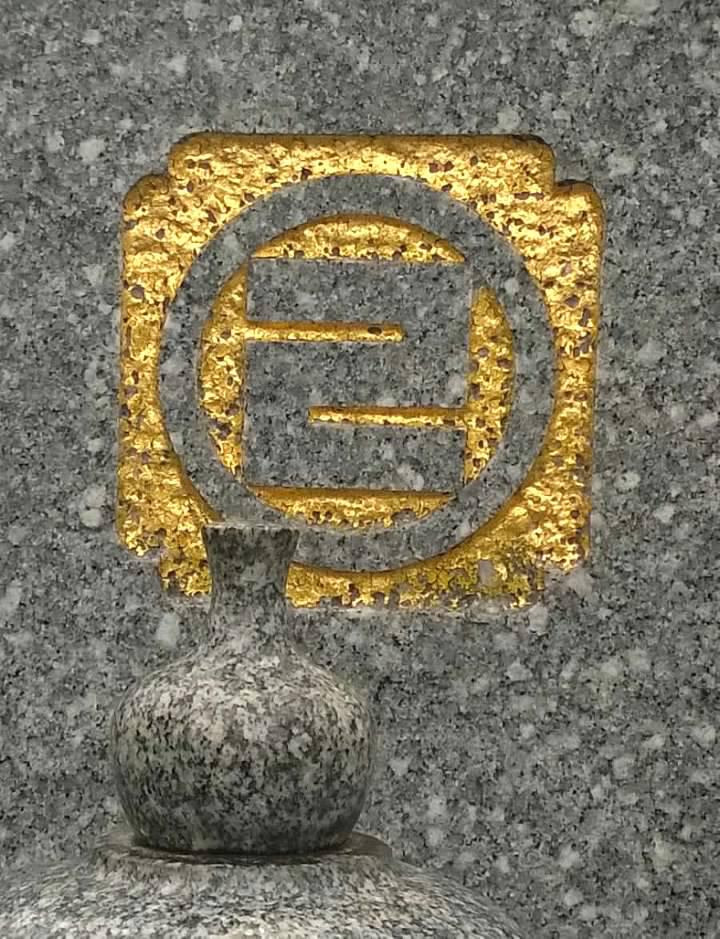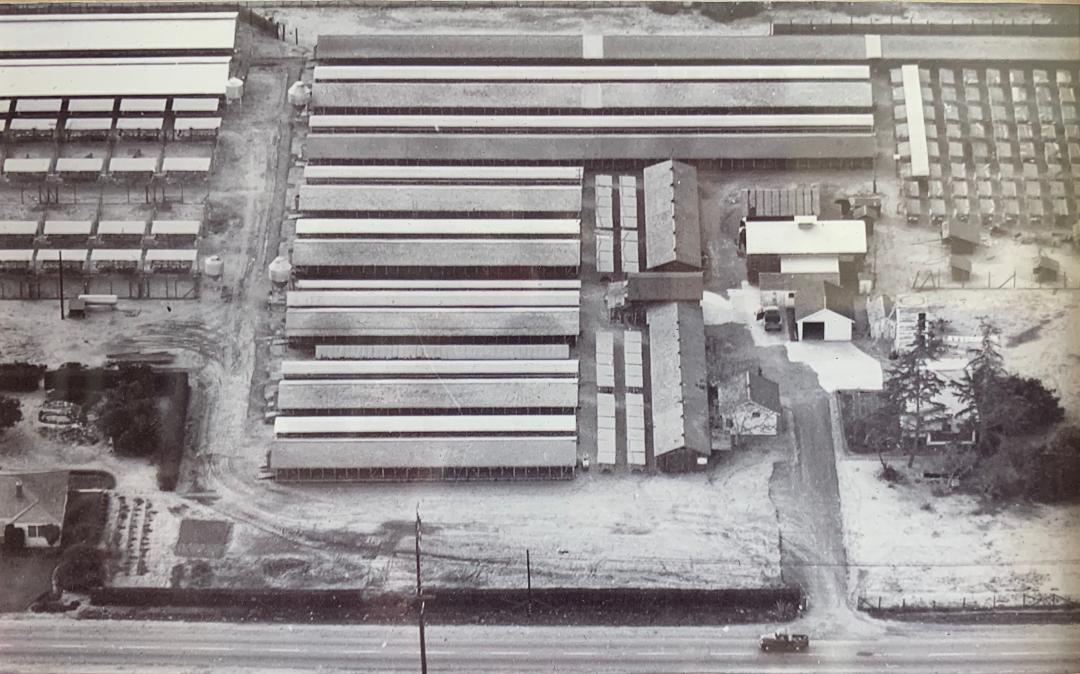Jugoro Ishii Poultry Ranch
Jugoro Ishii was born May 8, 1887, the third son of Hisakichi and Toku (Chiyoda) Ishii, in Karashima Tanushimaru, which is now part of Kurume, Fukuoka, Japan (on the southern island of Kyushu). A second son, Tsunezou, died at age seven, leaving Kyutaro and Jugoro as the two oldest. Thus, at one point and being the oldest living sons, they had to leave the home and go out on their own.
Being the oldest, Kyutaro left Japan first and went to Hawaii. Jugoro intended to follow his older brother to the United States. But by the time Jugoro was ready, his entry into the U.S. was impeded by the Asian Exclusion laws and prejudice against Asians. But undaunted, Jugoro persisted and at first went to Mexico where he spent a few years. He finally entered the U.S. via El Paso on August 8, 1907, with a plan to join his older brother (who by this time had come to the U.S. mainland and settled in the Talbert area of Orange County, California).
Jugoro did make his way to Talbert and reunited with Kyutaro, joining with his brother in farming. In 1912, Kyutaro returned to Japan and married Sada Nakamura. Jugoro went back to Japan the following year and on October 27, 1913, married Mumeno Kanegae, who lived in Kaneshima, a neighboring village to Tanushimaru. It was almost as if Kyutaro and Jugoro worked as a sort of “tag team” returning to Japan one after the other: one seeking a wife while the other watched over the farming at home.
It is interesting to note, however, that the land that Hisakichi Ishii (their father) farmed in Japan is still owned by the family – for five generations now. Hisakichi was a rice farmer and rice is still grown on the family land today. Currently, a great granddaughter of Hisakichi, Hisami Ishii and her husband, Noriyoshi, (who had to take the “Ishii” last name) live in the Ishii home and farm the land.
By late 1918, Jugoro moved his growing family to the growing community of Norwalk in Los Angeles County. There, he rented land at what is today the well known “Five Points/Norwalk Square” area and grew sugar beets. By 1924, his family included five children: Mary, George, Frank, Lily, and John.
But Jugoro had bigger goals in mind – the American dream. He moved the family to another location in Norwalk on Carmenita Road and started a poultry ranch, selling eggs. Being a poor immigrant whose mastery of English was virtually nonexistent for his entire life, Jugoro never borrowed money to pay for anything: land, cars, homes, farm equipment, etc. He saved and paid for everything in cash. He bought the land (a bit over ten acres) on Carmenita Road but because of the laws of the time, as an Asian alien, he could not himself take title to land. Thus, he had to buy the land in the names of his American-born children who were citizens, Mary and George. (That law, incidentally, was not repealed until AFTER WWII in 1952.)
World War II was for Jugoro and his family, as it was for all West Coast people of Japanese descent, a most traumatic experience. Once he and Kyutaro realized what was going to happen, the brothers formed a plan. Jugoro found a friend to run the poultry ranch during the family’s “internment” and took his family to Talbert. That way, both families would evacuate at the same time and be at the same internment camp together – Poston, Arizona. Frank, however, was already serving in the U.S. Army and remained on active duty for the duration of the War. Upon returning to California after the War, Jugoro was very fortunate, in that the family was able to get the poultry ranch back and resume operations. Most other Japanese-American families, however, were not so fortunate.
More specifically, coming out of Poston in 1944, most of the family initially went to Colorado because they could not come back to the West Coast because the War was still in progress. According to War Relocation Authority records, as of January, 1944: Jugoro, Mumeno, and Lily were in Ft. Lupton (where Jugoro was picking sugar beets) and Mary and John in Denver (living at different locations). Frank was in still the Army located at Camp Howze, Texas. George, however, had not been living at home when the War broke out and had been sent to the internment camp at Rohwer, Arkansas. When he left camp, George went to Dayton, Ohio, trying to get employment in the aircraft industry.
The story of George Ishii is an interesting “sidebar” in and of itself. When the War broke out, he was employed as chief engineer at an aircraft manufacturer in Van Nuys, California, Philips Aviation. Obviously, he was forced to leave that job – against the fierce objections of the president of that company, James Philips. George was actually one of the pioneers in the aviation industry. He knew Bill Boeing (yes, that one) and Jack Northrup (before there was a Northrup Corporation), and Herman “Fish” Salmon, Lockheed’s lead test pilot of the time. But his career was dashed. Upon, release from Rowher, he was hired – apparently mistakenly – at a bomber modification plant in Vidalia, Ohio (near Dayton), and fired as soon as they figured out he was Japanese-American. The U.S. Army forced Northwest Airlines (who operated the plant) to fire George. Despite several letters from experts and his previous employer as to his qualifications and loyalty to the United States, he could not get employment in any aviation related job during that time. Ironically, after the war, he served in the U.S. Army Air Corp at Elmendorf Air Force Base in Alaska.
John was drafted in January, 1945 and served in the U.S. Army with the 442nd Regimental Combat Team, arriving in Italy in spring of 1945. He returned home in 1946, and initially went back to Colorado. When evacuation hit, John was in the middle of his senior year at Excelsior High School. Thus, he was not there for graduation ceremonies and, I am told, his diploma was mailed to him at Poston.
After WWII, and their discharge from the U.S. Army, both Frank and John joined with Jugoro working the poultry ranch. John raised his family in the original family house on Carmenita Road while Jugoro built a new home just down the road. The poultry ranch operated successfully until 1967 when suburban “sprawl” into the outlying areas of Los Angeles County made it too difficult to continue farming in that area but Jugoro was not to be deterred.
In 1959, Jugoro had invested $200,000 in a 40-plus acre piece of property in Oceanside – paying, as always, in cash. With the end of the poultry ranch in Norwalk, the family sold the land and formed a new corporation. This new family business entered the mobile home park community business. At first, the land was leased to parties that owned and operated Laguna Vista Mobile Home Estates on the land. Then in 2013, the family acquired Laguna Vista, completing Jugoro’s dream.
Throughout the years, the Jugoro Ishii family was an extremely close-knit family, gathering to celebrate, Easter, Mother’s Day, Father’s Day, Thanksgiving, Christmas Eve, and New Years Day. Including the early years with Kyutaro’s side, gathering for Thankgiving and Christmas Eve went on for over 100 years – over three generations. During their lives Jugoro and Mumemo were held in very esteem by all of the family and friends. Today, the Jugoro Ishii family still has annual reunions. And, every other year, there are reunions between the Kyutaro and Jugoro Ishii sides. Also, Auntie Kuni, is now 103, and we celebrate her birthday with gatherings that include both sides of the family. In April, 2022, Auntie Samie turned 100.
In retirement, Jugoro and Mumeno moved off the land on Carmenita to a home in a quiet neighborhood near Norwalk Park. There, they continued have a vegetable garden, fruit trees, and most importantly a koi pond. Mumeno crocheted beautiful tablecloths for her daughters, daughters-in-law, and granddaughters and won awards for her efforts.
Jugoro passed away in August, 1976, and Mumeno in July, 1989. They were married 63 years. Their long and loving marriage served as a wonderful example: their sons were all married over fifty years: George & Mary for 58; Frank & Samie for 62, and John & Toyo for 57 years. A grandson, Larry and wife, Georganne, have been married for 53 years. Jugoro has one great grandson, Jeffrey, and two great-great grandsons, Jordan and Jaret, that carry on the “Ishii” name.
Jeffrey is a baseball scout for the St. Louis Cardinals Major League Baseball team and (pre-pandemic) would travel to Japan twice a season to scout players. That did enable him to sometimes make his way to Fukuoka to watch players for the Hawks or opposing teams. This also enabled Jeffrey to be in contact with certain of the Ishii relatives. Jeffrey, Jordan, and Jaret have all learned to speak Japanese and can read Japanese as well.
While Jugoro was alive, he made three only three trips back to his homeland: the first time to marry Mumeno, another in 1934 (to bring Mary back home and at which time he took John), and lastly in 1957 with Mumeno. Otherwise, contact with the family was only by written letter or later by telephone.
In recent years, our family members from California in the have been able to meet with family in the “old country” in 2017 and in 2019. Georganne Ishii, the wife of grandson, Larry, has become the genealogist and historian of the family and through her efforts, the vast majority of this history has been compiled and saved for the benefit of those living and our posterity. To this end, great thanks is due Georganne for her efforts so that this history and opportunity has not been lost.
Thankfully, we have a cousin, Masamitsu Ishii, in Japan (that fluently speaks English) that Georganne communicates with regularly and as a result, she organized three trips to Japan: in 2015 and the two mentioned above. The first meeting in 2015, was before a cruise that Georganne and Larry took at which time they met with Masamitsu and his family in Yokohama and discussed the possibility of having a reunion at a later date in Fukuoka.
In 2017, that first reunion became reality in Fukuoka at which Larry, Georganne, Karie (Ishii) Lasko (granddaughter of Jugoro), Adrienne (Lasko) Chamberlain (great granddaughter of Jugoro), Jeffrey Ishii, and Jaret Ishii met with many of the Ishii family descendants.
Then in 2019, a second and larger reunion took place also in Fukuoka at which time the following attended from California: Larry Ishii, Georganne Ishii, Karie Lasko, Nina (Martin) Nagel (granddaughter of Jugoro), Debbie (Ishii) Chiya (granddaughter of Jugoro), and Candace Chiya (great granddaughter of Jugoro). Attending from the Kyutaro side were: Donna (Ishii) Chiamori (granddaughter of Kyutaro); Erin (Chiamori) Takemoto (great granddaughter of Kyutaro) and husband, Mark; Erin’s daughters, Emiko and Megumi (great great granddaughters of Kyutaro); Andrea (Chiamori) Arakawa (great granddaughter of Kyutaro) and husband, Tatsumi; Andrea’s sons, Keiren, Kojorio, and Keizo (great great grandsons of Kyutaro); Anthony Ishii (grandson of Kyutaro) and wife, Jeanette; Michael Ishii (great grandson of Kyutaro) and his fiance, Sky Shields.
Jugoro was well respected and known in the community. I remember very old family friends. There were the Franciosi’s that grew flowers and lived across Carmenita from the poultry ranch. There were the Pellitier’s who lived north of the poultry ranch on Carmenita. So close were the families that we called the elderly Mrs. Pellitier “Grandma” Pellitier. Then there were the Tripepi’s who had the car wash in town. When the new Norwalk City Hall was opened, Jugoro had his name on a plaque as a contributor to its building.
Jugoro and Mumeno could not have imagined what their legacy would eventually be nor what they would leave behind for the generations that would follow. It has been a truly amazing story – the American Dream!
Jugoro Ishii Family: Jugoro standing, Mumeno sitting; children from left: Mary, John (in Mumeno's lap), Lily, Frank, George
Jugoro Ishii Farm House, Carmenita Road, Norwalk, California; c. 1930
Ishii rice fields, Japan: from left: Masamitsu Ishii, Noriyoshi Ishii, Georganne Ishii, Hisami Ishii, Adienne Chamberlain, Karie Lasko
Kyutaro and Jugoro Ishii Combined Family Reunion, 2017 in Anaheim, California
Ishii Family Reunion in Fukuoka, Japan in 2017
Ishii family crest (mon) on headstone at family cemetery in Tanushimaru village
Aerial view of Jugoro Ishii poultry ranch (taken in early 1960's)

